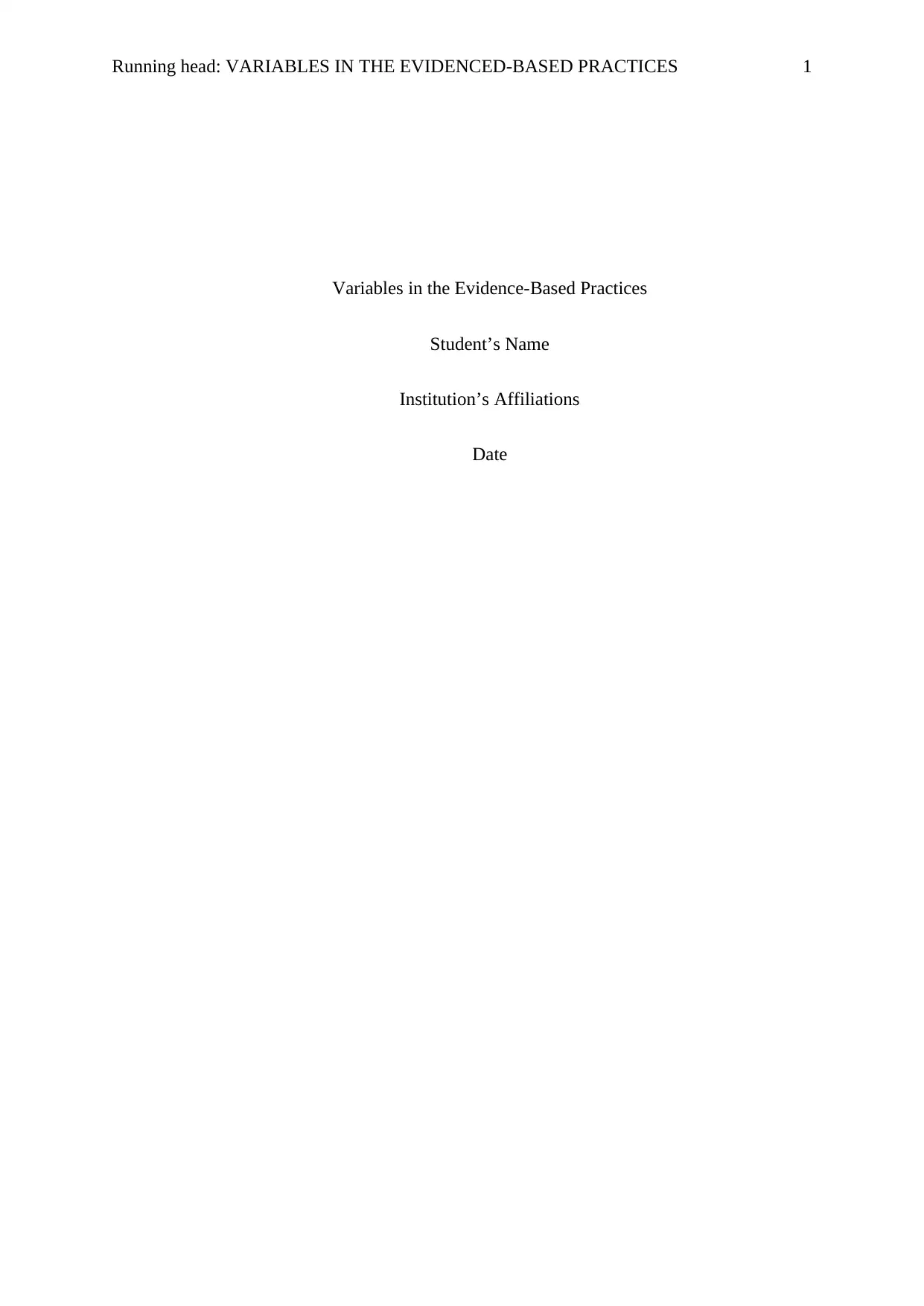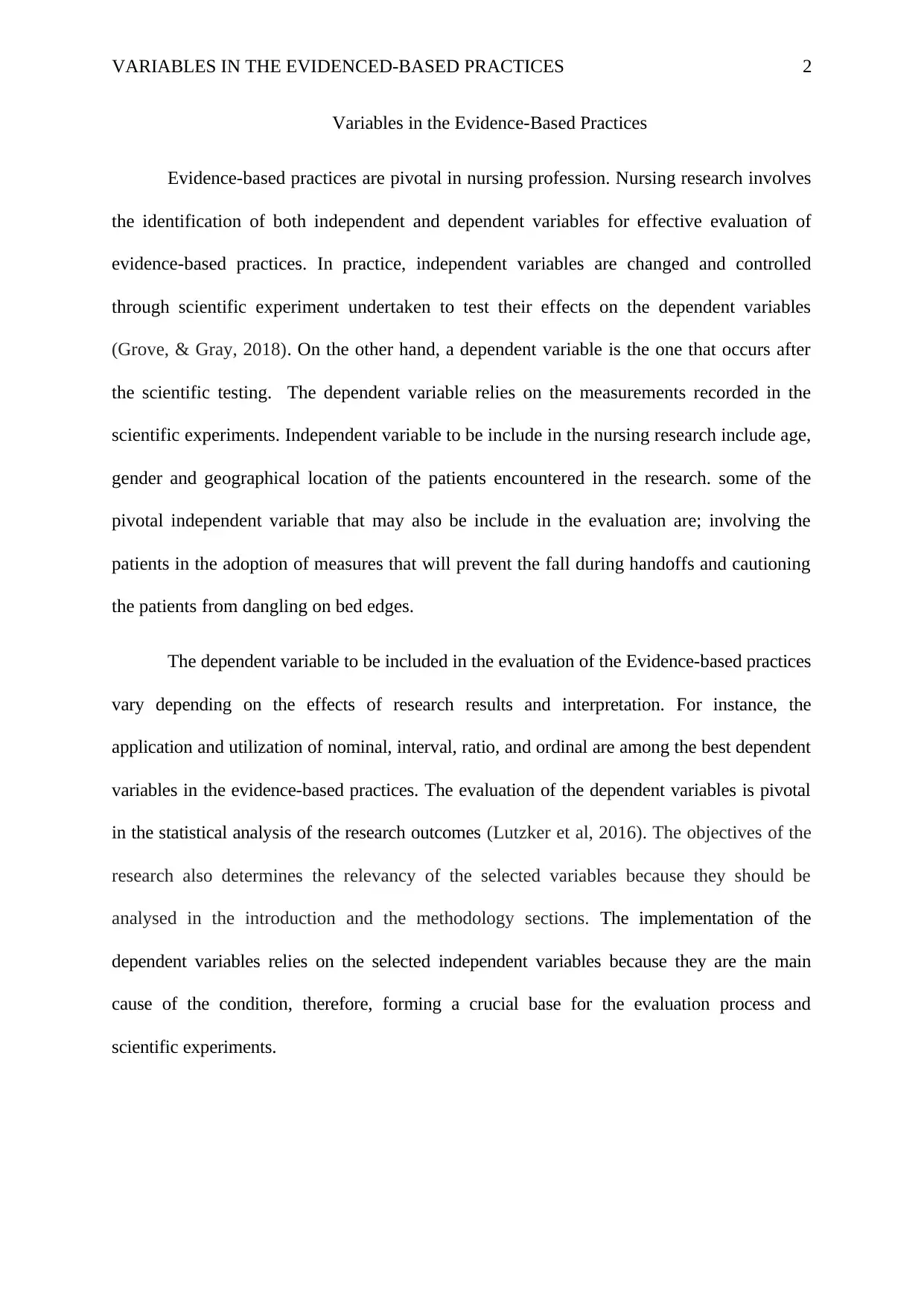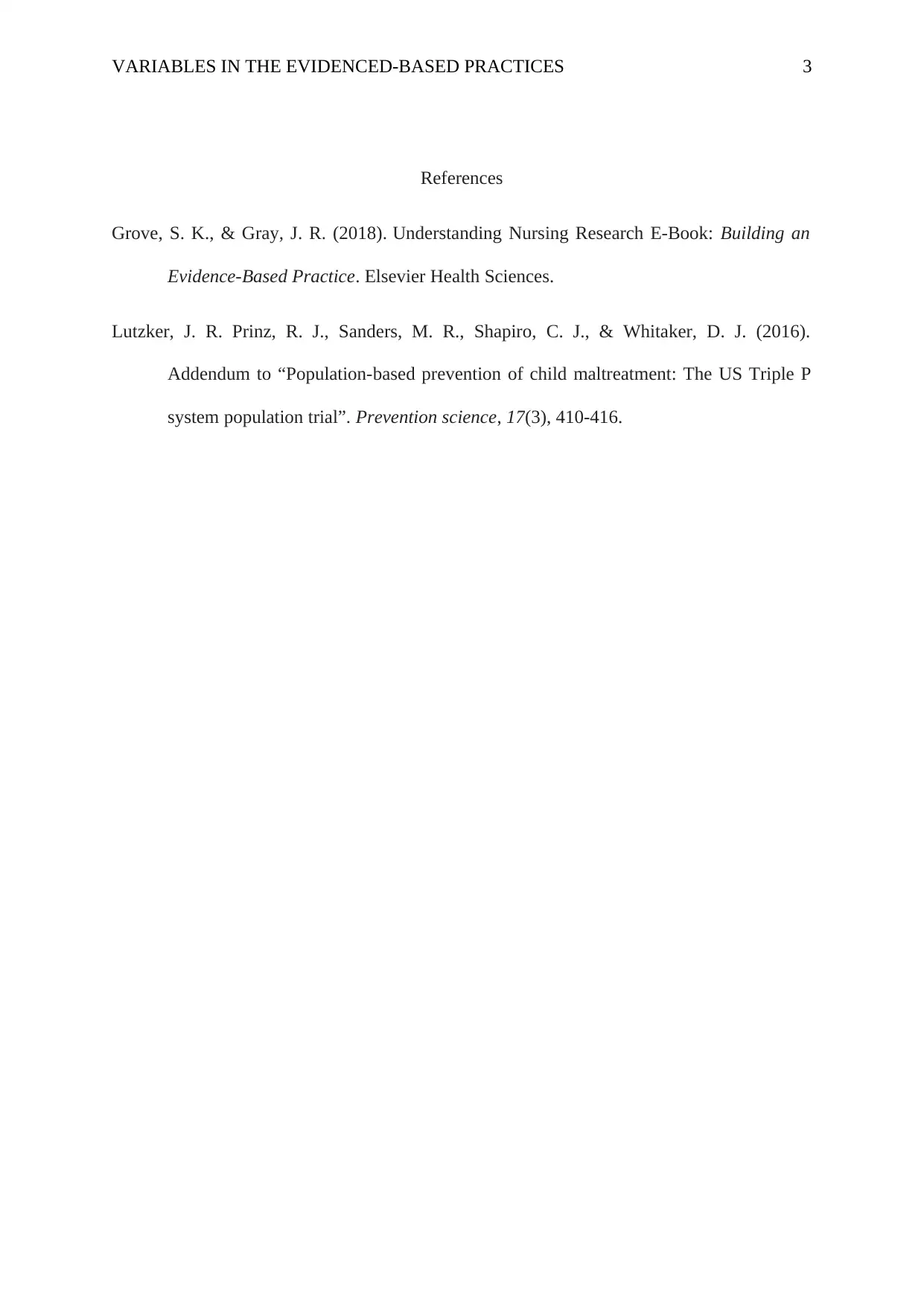Variables in Evidence-Based Practices: A Nursing Research Report
VerifiedAdded on 2023/01/17
|3
|415
|74
Report
AI Summary
This report delves into the analysis of variables within evidence-based practices in nursing research. It highlights the significance of both independent and dependent variables in evaluating the effectiveness of nursing interventions. The report discusses the application of independent variables, such as age, gender, and geographical location, along with interventions like fall prevention measures. It also emphasizes the importance of dependent variables, including nominal, interval, ratio, and ordinal scales, in statistical analysis. The report underscores that the selection of these variables is guided by the research objectives and methodology, forming a critical foundation for scientific experiments and evaluations. The report references key literature, providing a comprehensive overview of variable analysis in the context of evidence-based nursing practices.
1 out of 3










![[object Object]](/_next/static/media/star-bottom.7253800d.svg)